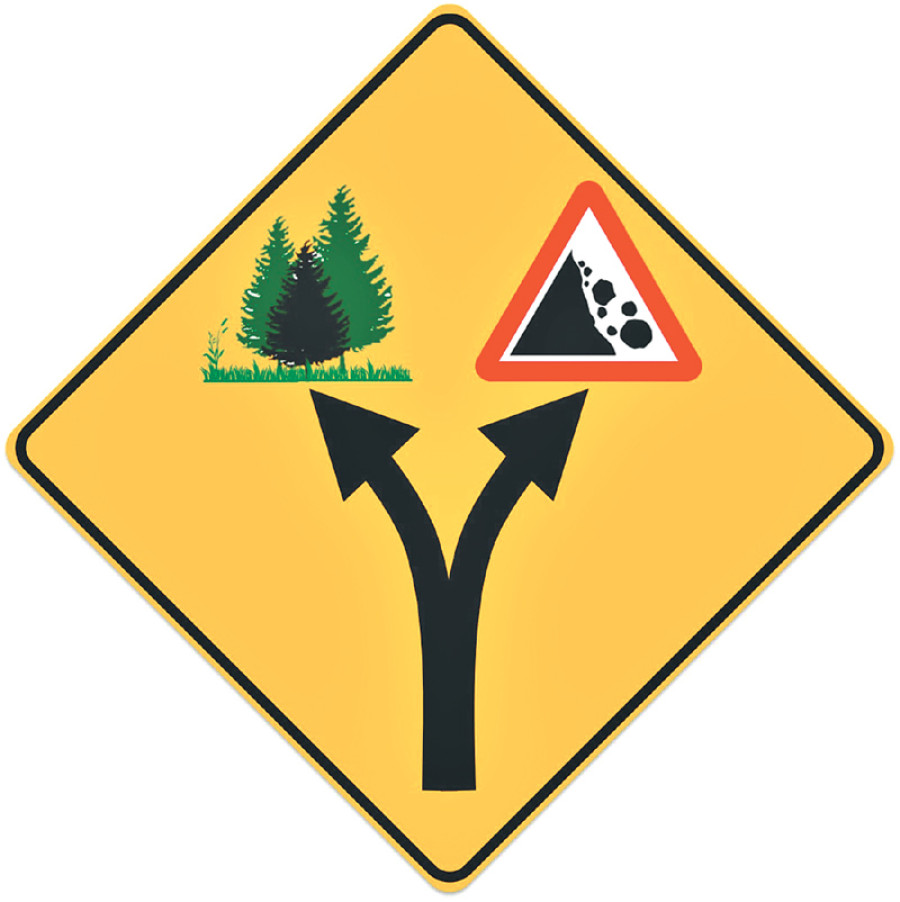Opinion
Eco safe roads
Poor road construction and climate change contribute to near record landslide mortality in 2016
Brian McAdoo, Karen Sudmeier-Rieux & Peter Laban
As Nepal celebrates the first anniversary of the 2015 constitution, 18 months after the 2015 Gorkha Earthquake, and following one of the deadliest monsoon seasons due to landslides, the country is at a crossroads in many regards. According to the preliminary Ministry of Home Affairs 2016 statistics, there are 107 officially registered deaths and over 1,000 affected families due to landslides alone. According to Petley’s Global Landslide Database, landslides in Nepal have caused 164 fatalities in 57 recorded events in 2016. And these figures are likely to rise.
As international researchers of landslides, land use trends and landslide mitigation solutions, we offer a few observations on the role of roads in landslide occurrence based on our collective four decades of landslide research.
Hot political issue
In 1979, Peter Laban was commissioned by the United Nations Food and Agricultural Organisation (FAO) to document the number of landslides and their origin as either natural or human-induced. The study was part of the first comprehensive natural resource reconnaissance inventory for the whole country (1977-1979) by the FAO and the Department of Soil and Water Conservation of the Ministry of Forests. It was triggered by increasing international attention and debate on the origin of flooding in India, with especially India pointing to Nepali farmers’ inappropriate terracing practices and government neglect as the root causes of landslides. The origin of landslides thus became a hot political issue.
This “Theory of Himalaya Degradation” was subsequently discredited, backed by the Laban/FAO study which documented that 74 percent of all landslides were due to natural causes, such as river undercutting of steep mountain slopes and other natural mountain landscape building processes, with 26 percent being human-induced. The study also stated that while the overall density of landslides associated with roads was low (5 percent), roads represented, at that time, a very small proportion of total land area. However, Laban warned that as the road network continued to expand, the number of landslides will “increase drastically in the near future, especially if more careful
construction methods are not undertaken” and that this increase will affect the nation’s development. The debates and study of soil losses and land conservation led to the creation in 1974 of the Department of Soil and Water Conservation, (today it is the Department of Soil Conservation and Watershed Management) which is mandated to reduce soil erosion and landslides through its 61 District Soil Conservation Offices.
The most recent trends show the network of rural Nepali roads rapidly expanding since the peace talks ended the Maoist insurgency. According to the Department of Roads, the 4,740 km of roads documented in 1998 skyrocketed to over 12,493 in 2014, only half of which were well engineered, paved roads.
In the quest for constructing roads quickly, Laban’s predictions have unfortunately become a reality, but in an environment more complex than could have been imagined at the time. In the period between 1978 and 2005, there was a six-fold increase in landslide fatalities (from 20 to 120 on average per year, the average for the last five years is 152 deaths per year). A primary driver of this increased mortality has been a deadly combination of an increase in poorly constructed roads with more intense monsoon rains due to climate change.
Moving forward
Many of these losses are avoidable with concerted action. Good route selection, appropriate construction practices (which need not be expensive) and proper maintenance regimes, especially of drains and earthworks, can dramatically reduce landslide losses. Many other countries have been able to achieve substantial reductions in landslide impacts; there is no reason why this cannot be the case in Nepal.
From October 3-7, a national policy workshop will be organised by the International Union for the Conservation of Nature (IUCN) Nepal, and the University of Lausanne, Switzerland under the leadership of the Department of Soil Conservation and Watershed Management. The workshop will highlight how ecosystem solutions can significantly reduce disaster risk. For example, bio-engineered approaches which combine the use of locally available, deep-rooted plants and low-cost drainage and stabilisation measures can significantly reduce the damage and loss of lives associated with unplanned rural roads while creating livelihood benefits for communities. This is what we call “Eco-Safe Roads”. A second workshop on October 2 will address the latest developments in landslide research, and how to move toward a more collaborative platform for sharing what we know about these deadly hazards.
With the new constitution in place, Nepal is entering a period that could see continued development in the rural sectors as political stability makes way for even more investment opportunities. As the next development plans coalesce, there is an opportunity to move forward on a more sustainable development trajectory that will save both natural resources and lives.
Sudmeier-Rieux is a senior researcher at the University of Lausanne, Institute for Earth Science, Switzerland; McAdoo is affiliated to Yale-NUS College, Singapore; Laban is affiliated with the IUCN Commission of Ecosystem Management, Palestine




 7.12°C Kathmandu
7.12°C Kathmandu











